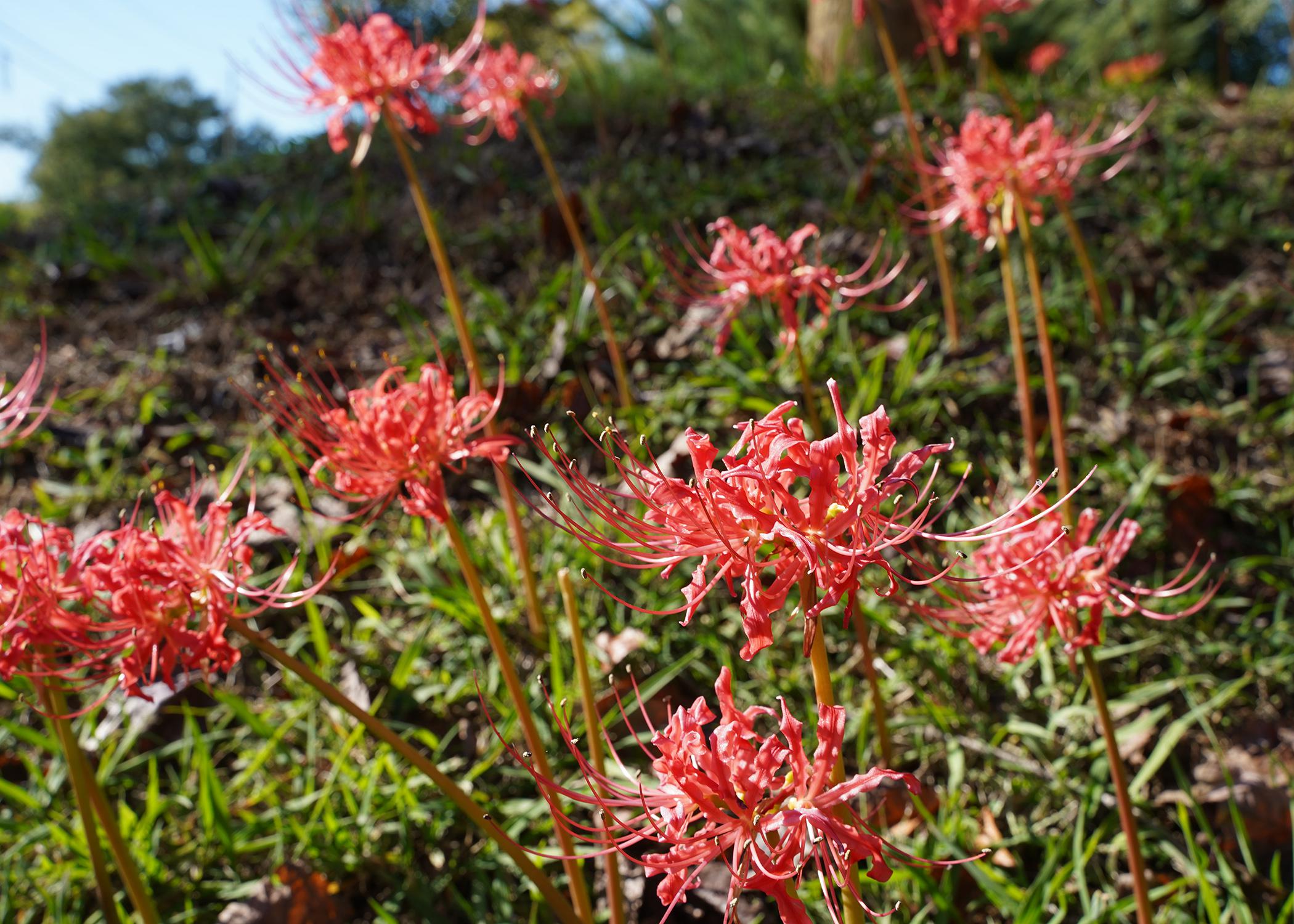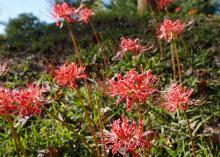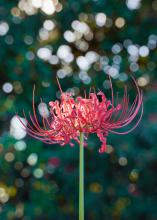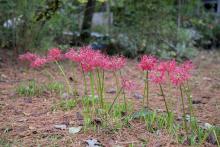Information Possibly Outdated
The information presented on this page was originally released on October 28, 2019. It may not be outdated, but please search our site for more current information. If you plan to quote or reference this information in a publication, please check with the Extension specialist or author before proceeding.
Lycoris bring unexpected beauty to fall landscapes
I love the autumn season because we’re starting to recover from Mississippi’s hot and humid summer with cooler weather. Not only do gardeners appreciate the season change, but so do many of our landscape plants.
Fall heralds the appearance of one of the most fascinating flowering plants we can enjoy in our landscapes and gardens. Of course, I’m referring to Lycoris. You recognize them as those flowers that seem to pop up out nowhere.
Now, I realize that most gardeners don’t call this plant by its botanical name.
Most of the common names for Lycoris rely on the fact that this plant has a unique way of growing. In the early spring, strap-like foliage appears and looks very much like daffodil foliage, but without any flowering. It disappears after a few weeks.
Then, in the fall, tall flower stalks seem to magically appear and surprise many folks. This gives rise to some of the popular, common names for Lycoris: surprise or resurrection lilies.
Another name more commonly used in the coastal region is hurricane lily. This name is from the fact that they bloom during hurricane season, not because they are storm predictors.
But that brings me to this plant’s most fun name. Botanically, when a plant blooms without any leaves, the flowers are referred to as being naked. So, you may have called Lycoris “naked ladies,” or as some horticultural aficionados say, “nekkid” ladies.
Lycoris flowers are very fine-textured and delicate. Their exotic and spidery look leads to yet another common name: spider lilies. They remind me of the spidery flowers of our spring-blooming native azaleas.
In Mississippi, we primarily see the red Lycoris radiata, which is a long-lived heirloom and a popular pass-along plant with gardeners. There are also beautiful yellow selections and even a white variety.
There are many other Lycoris species, but most need a colder winter than we typically have in Mississippi.
Plant Lycoris bulbs in the fall. Some independent garden centers will have the bulbs for sale, but if you have friends with Lycoris growing in their landscapes, ask if you can dig up a few to take home. Most gardeners will be willing to share this wonderful plant.
Plant in the full sun. Since Lycoris has such a unique growth habit, be careful to choose a site where the emerging flowers won’t get trampled or cut with the lawn mower.
Whatever you call Lycoris, this is one plant everyone should have at least a couple of in their landscape. They’re easy to care for. Proof of this is the fact that they are commonly seen growing completely unattended at old home sites long after the house is gone.





